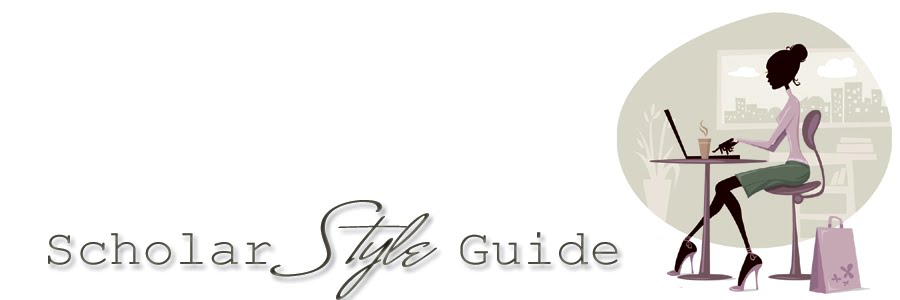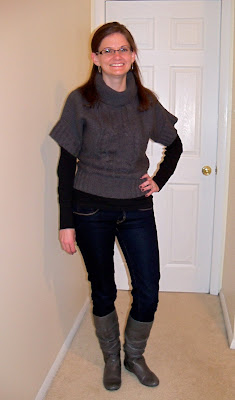Composition:
Plaid Button-down Shirt (Husband's closet)Grey Striped Vest (Gap)
Brown Leggings (Lefties)
Brown Leather Sandals (Target)
Usage:
Alert! This outfit might categorize as a crash-and-burn of the sartorial variety.
My concerns with it are two-fold.
First, when I assembled this ensemble, I did not foresee the English student-related gags from coworkers. Nor did I foresee the irony of wearing this outfit while editing a student essay in which the writer referred to "artsy, indie-chick, English majors[s]." But that actually happened. Me, at my desk, in all but thick-rimmed glasses and a blazer with leather elbow patches, suggesting that said writer exchange the term "indie-chick" for "bohemian." The edit sounded more P.C. (or something), but it didn't alleviate the awkwardness I felt from simultaneously putting forth a stereotype with my wardrobe and refuting it with my ballpoint pen.
Second, I had intended to riff on the "boyfriend shirt" by stealing the real deal from my husband's closet. This decision backfired. My original logic? Trans-gender styles like over-sized buttondowns and "boyfriend jeans" have gained popularity, so I thought I'd test the effect. Normally, a 'masculine' garment on a female body creates a flattering androgyny, but attempting to execute this look with leggings - especially if you've overestimated the length of the upper garment - will most assuredly blow your casual cover. Rather than breezing through a work day looking effortless, you will spend eight hours tugging fabric over your booty.
So the casual, cross-gender performance I intended to enact fizzled whilst I unintentionally performed an occupational stereotype. Oh, the tensions.
Prompts:
- How do you perform your occupation via clothing without looking costume-y or stereotypical?
- How do you wear cross-gender garments like "boyfriend shirts"? With what other articles of clothing do you pair them, and in what contexts do you wear them?




















